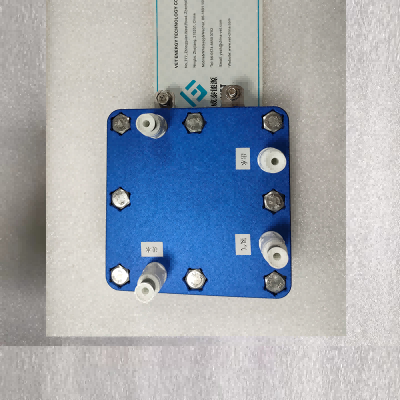Unveiling the Essence: Key Components of a Hydrogen Fuel Cell Electrolyzer and Their Role in the Electrolysis Process
2023-12-15
Introduction:
In the realm of sustainable energy, hydrogen fuel cell electrolyzers stand as heralds of a cleaner, greener future. At the heart of these transformative devices lie key components that orchestrate the intricate dance of electrons, protons, and water molecules, converting electrical energy into the coveted fuel of tomorrow—hydrogen gas. In this exploration, we unravel the essence of these components and how they collaboratively contribute to the electrolysis process.
The Ensemble of Key Components:
1. Electrolyte:
- Role: The electrolyte is a pivotal component that facilitates the movement of ions within the electrolyzer. It provides the medium through which protons (H⁺) can travel from the anode to the cathode. Common electrolyte materials include liquid alkaline solutions, proton exchange membranes (PEMs), and solid oxide materials.
2. Anode:
- Role: Positioned at one end of the electrolyzer, the anode serves as the site of the oxidation half-reaction. Here, water molecules lose electrons to form oxygen gas (O₂) and positively charged hydrogen ions (protons, H⁺). The anode is typically made of materials such as nickel or other conductive metals.
3. Cathode:
- Role: At the opposite end lies the cathode, where the reduction half-reaction occurs. Protons, having traversed the electrolyte, reach the cathode, where they gain electrons. This results in the formation of hydrogen gas (H₂). Like the anode, the cathode is composed of conductive materials or catalysts, often including platinum or other metals.
4. Electrodes:
- Role: Electrodes, positioned at the anode and cathode interfaces, are crucial for facilitating electron transfer during the redox reactions. Materials like platinum are commonly used as catalysts in the electrodes, enhancing the efficiency of the electrolysis process.
The Choreography of the Electrolysis Process:
1. Application of Electrical Voltage:
- Role: The process begins with the application of electrical voltage across the anode and cathode. This voltage initiates the electrolysis by inducing redox reactions.
2. Oxidation at the Anode:
- Role: At the anode, water molecules near the surface undergo oxidation. Electrons released during this process travel through an external circuit.
3. Reduction at the Cathode:
- Role: Simultaneously, at the cathode, protons migrating through the electrolyte combine with electrons arriving from the external circuit. This results in the reduction of protons to form hydrogen gas.
4. Hydrogen Collection:
- Role: The hydrogen gas produced at the cathode is collected for various applications, including energy storage, fuel for fuel cells, or industrial processes.
Efficiency and Sustainability:
The synergy among these components harmonizes in the electrolysis process, converting electrical energy into hydrogen with remarkable efficiency. This green process produces only oxygen and hydrogen gas as byproducts, contributing to a cleaner and more sustainable energy landscape.
Conclusion:
In the symphony of sustainable energy, the hydrogen fuel cell electrolyzer plays a lead role, and its key components form the notes that compose the transformative melody of electrolysis. As we delve into the intricacies of the electrolyzer's ensemble—electrolyte, anode, cathode, and electrodes—we witness the convergence of science and innovation. Together, these components propel us into a future where hydrogen emerges not just as a fuel but as a beacon of clean energy, powered by the alchemical dance within the heart of the hydrogen fuel cell electrolyzer.



